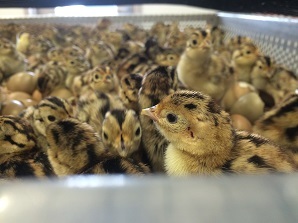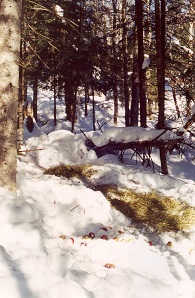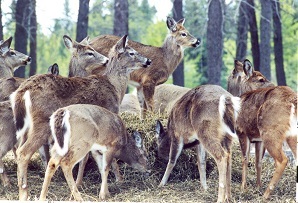Hunting and Trapping Newsletter
The New York State Department of Environmental Conservation sent this bulletin on 01/17/2023 12:00 PM EST |
| DEC Delivers - Information to keep you connected and informed from the NYS Department of Environmental Conservation |
| Share or view as a web page || Update preferences or unsubscribe |
Hunting and Trapping Newsletter |
Want to Raise and Release Pheasants? DEC Now Accepting Applications for the Day Old Pheasant Chick Program
The cold winter months couldn’t be a better time to start thinking about warmer spring weather, and with that the arrival of pheasant chicks hatching at the Reynolds Game Farm. Once again, pheasant chicks will be available through the DEC’s Day-Old Pheasant Chick Program. In 2022, This program provided 30,000 free chicks to approved applicants. Although the chicks are provided for free, there are several important requirements to consider if you would like to participate:
For more information on the program requirements and useful information on how to build pens, please read the Day-Old Pheasant Chick Program Guide (PDF). This program wouldn’t exist without your help, and through volunteers increases fall hunting opportunity in the face of diminished wild populations. In addition, it provides an educational experience through animal husbandry and the outdoors. The department will again be utilizing its online application. Applications must be submitted by March 25th and anyone with questions about eligibility for the program can contact their regional wildlife office or the Reynolds Game Farm at (607) 273-2768.
Consequences of feeding deer in winter
Now that white-tailed deer hunting seasons have ended throughout most of New York State, it may be tempting to begin feeding deer to “help” them through the winter. However, feeding deer during the winter or other times of the year is unnecessary, prohibited in New York, and can have very negative consequences for deer, your neighbors, and surrounding wildlife habitat. During the winter, deer primarily rely on woody and evergreen vegetation (collectively known as woody browse) for their daily nutritional and metabolic needs. The digestive enzymes in a deer’s stomach change in the winter to better digest this browse. If deer are provided with unnatural food sources such as corn or hay after this change in diet has occurred it can result in deer becoming ill or even their death. Deer will attempt to utilize the unnatural food source, but can develop acidosis (i.e., grain overload disease) or enterotoxemia (i.e., Clostridium overgrowth) disease because they can’t digest the food properly. Both diseases occur acutely and can result in the rapid illness and death of deer in winter even though their stomachs are full.
Deer also congregate around food sources in winter which can increase the risk for disease transmission. For example, if a deer infected with chronic wasting disease (CWD) visits an artificial deer feeding site it will shed CWD prions in its saliva directly on the food, which can infect any other deer that feed from the same site. Congregations of deer around artificial feeding sites can also increase the risk for deer-vehicle collisions and deer related damage to landscape plantings, orchards, and tree farms. Inflated deer densities resulting from deer feeding can also exceed the carrying capacity of the surrounding habitat, resulting in wildlife habitat degradation. Habitat improvement, especially the creation and promotion of early successional habitat, is the best way to ensure that deer and other species of wildlife have plenty to eat all year and avoids the negative consequences of deer feeding. Anyone interested in improving wildlife habitat on their property can contact their regional DEC deer or wildlife habitat management biologist. For a list of tree and shrub species that deer prefer to eat in winter and that you can promote on your property, visit DEC’s winter deer foods webpage. Take Part in the DEC Informational Kiosk Survey
Give us your feedback and win a gift card to a sporting goods store! DEC would like your opinion on our informational kiosks. Kiosks are small, open wooden structures that provide cover for educational/informational signs. These kiosks are located at various state properties such as state forests, wilderness areas, conservation easements, wildlife management areas (WMAs), boat launches, and more. Take our survey to let us know what you think and be entered to win a $50 sporting goods store gift card and a free subscription to the Conservationist magazine! Winners will be announced each month from January 2023 through January 2024. A grand prize winner will be announced in January 2024 and will receive a $200 sporting goods store gift card and a free magazine subscription. By providing input, you can help us improve your outdoor experience! For prize rules and regulations, please visit DEC's website.
|





